New Scientist covers the latest developments in science and technology that will impact your world. New Scientist employs and commissions the best writers in their fields from all over the world. Our editorial team provide cutting-edge news, award-winning features and reports, written in concise and clear language that puts discoveries and advances in the context of everyday life today and in the future.
Elsewhere on New Scientist
Power up • The technology to create a greener, safer future exists – we need the will to use it
New Scientist
Infection surge in Tokyo • Japan has extended emergency measures as covid-19 cases spike during the Olympic games, reports Matthew Sparkes
Svalbard warming is a warning • Rapid warming on an Arctic archipelago provides a glimpse into the future for other parts of the globe that are changing more slowly, reports Adam Vaughan
What to expect from the IPCC report
Chinese vaccines get boosted • Many countries are using other jabs to improve the efficacy of the Sinovac or Sinopharm ones
Black holes with magnetic field ‘hair’ shed it in hot plasma
Tiny bendy camera can produce three-dimensional images
Myocarditis more likely after infection than vaccination
Comet’s dust trail could rain down on Venus in December
AI cracks mystery of ancient deaths • Jumble of bones reveals how waves of animals perished millions of years ago
Secret messages can be hidden in whale or dolphin chatter
Direct action at sea • Activist groups such as Greenpeace are policing marine protected areas where they say the UK government is failing to, finds Adam Vaughan
Single-celled organism has evolved a natural mechanical computer
Iconic spacecraft may still be flying around the moon
QAnon conspiracy theory posts appear to be written by more than one person
Keep up with the Joneses with a handy algorithm
Oldest ever animal fossils discovered • 890-million-year-old rocks contain the remains of ancient sponges
Caffeine in nectar gets bees buzzing for certain blooms
We’ve glimpsed a black hole’s behind
Fish lets others woo mate then muscles in
Really brief
Ancient humans met migrating wild dogs
Living cheek by jowl is linked to loneliness and isolation
We’re more likely to cheat multiple victims
Leapfrogging fossil fuels • As energy access improves in low-income countries, there is an opportunity to go straight to clean technologies, says Jim Watson
Should social media come with a health warning? • The pandemic has provided yet more evidence that misinformation can have devastating consequences, writes Annalee Newitz
Your letters
Nectar hunters
How injustice sickens • From polluted air to police brutality, a bad environment makes poor and marginalised people sick. Layal Liverpool explores a book pulling no punches
Learning from a robot • After Yang is a beautiful, thoughtful movie, evoking a future where humans learn from androids, finds Davide Abbatescianni
Don’t miss
The sci-fi column • Red Planet blues Think you have seen every possible take on Mars exploration? How to Mars plays this age-old premise for laughs in a novel that is based on an extraordinary real-life plan, says Clare Wilson
A new energy world
FOUR ENERGY FUTURES
ENERGY: A STATUS REPORT • The primary cause of climate change is our release of greenhouse gases through burning fossil fuels that were buried underground for hundreds of millions of years. Creating a sustainable energy future requires most of our energy demand to be covered by electricity derived from clean, renewable sources such as solar and wind – a huge undertaking, given where we are...
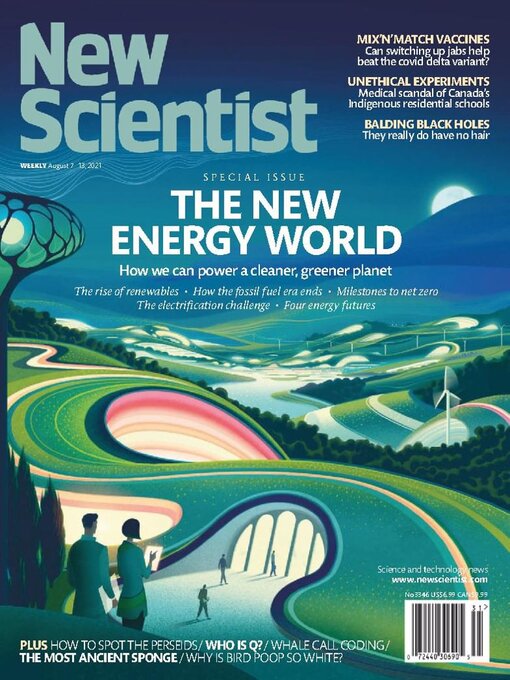
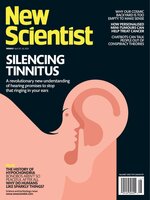 Apr 20 2024
Apr 20 2024
 Apr 13 2024
Apr 13 2024
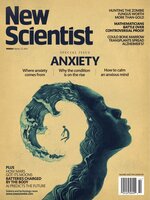 Apr 06 2024
Apr 06 2024
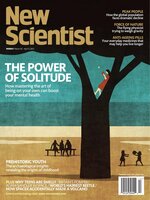 Mar 30 2024
Mar 30 2024
 Mar 23 2024
Mar 23 2024
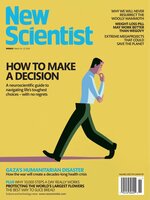 Mar 16 2024
Mar 16 2024
 Mar 09 2024
Mar 09 2024
 Mar 02 2024
Mar 02 2024
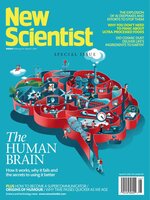 Feb 24 2024
Feb 24 2024
 Feb 17 2024
Feb 17 2024
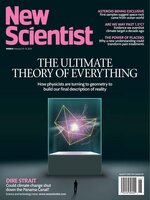 10 Feburary 2024
10 Feburary 2024
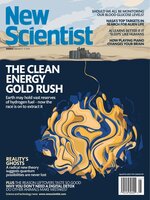 Feb 03 2024
Feb 03 2024
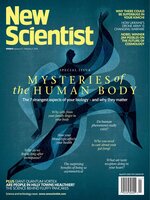 Jan 27 2024
Jan 27 2024
 Jan 20 2024
Jan 20 2024
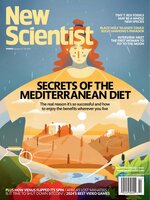 Jan 13 2024
Jan 13 2024
 Jan 06 2024
Jan 06 2024
 Dec 30 2023
Dec 30 2023
 Dec 16 2023
Dec 16 2023
 Dec 09 2023
Dec 09 2023
 Dec 02 2023
Dec 02 2023
 Nov 25 2023
Nov 25 2023
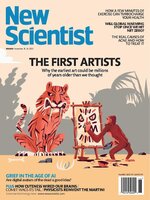 Nov 18 2023
Nov 18 2023
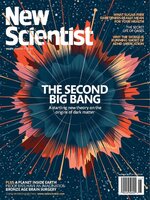 Nov 11 2023
Nov 11 2023
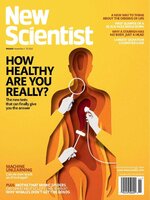 Nov 04 2023
Nov 04 2023
